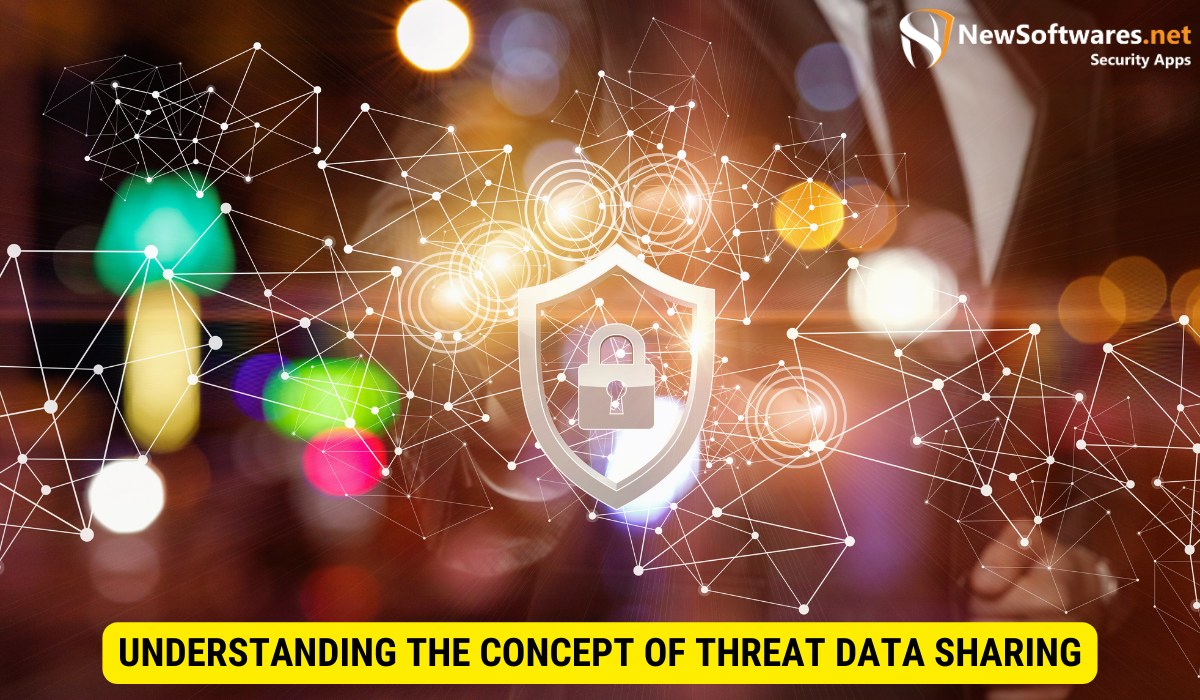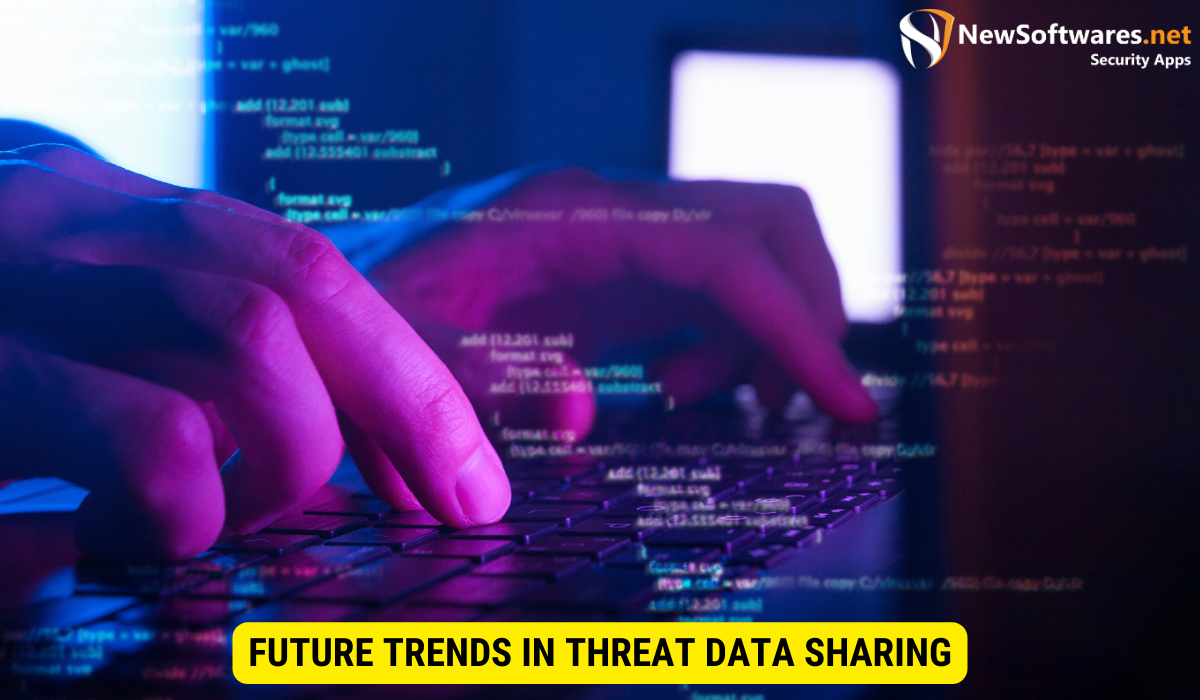Only 42% of enterprises actively engage in sharing threat data with external parties as part of their cybersecurity strategy, influenced by factors like organizational culture, resource availability, and legal concerns.
In today’s rapidly evolving digital landscape, cyber threats have become an unavoidable reality for enterprises. To combat these threats effectively, it is crucial for organizations to have access to timely and accurate threat intelligence. One potential source of this valuable information is through threat data sharing between enterprises. However, the question remains: What proportion of enterprises actually engage in this collaborative defense approach? Together, we will delve into the concept of threat data sharing, explore its current state in enterprises, discuss its benefits and challenges, and look at future trends in this evolving domain.
Understanding the Concept of Threat Data Sharing

Threat data refers to the information collected and analyzed about cyber threats, including attack patterns, indicators of compromise, and vulnerabilities. By sharing this data with other organizations, enterprises can collectively enhance their security posture and stay one step ahead of malicious actors.
Sharing threat data involves exchanging information through trusted networks or platforms, often facilitated by cybersecurity organizations and industry collaborations. This cooperative approach empowers enterprises to gain broader insights into emerging threats and improve their incident response capabilities.
Definition of Threat Data
Threat data encompasses various types of information related to cyber threats, such as:
- Indicators of compromise (IOCs): These are patterns, signatures, or artifacts that indicate an ongoing or potential cyber attack.
- Threat intelligence reports: Detailed analyses and assessments of emerging threats, their methodologies, and potential impact.
- Vulnerability information: Data about software vulnerabilities, including patches and recommended mitigation measures.
- Reputation data: Insights into the reputation and trustworthiness of websites, IP addresses, or domains.
By sharing these types of data, enterprises can benefit from the collective knowledge of the larger cybersecurity community.
The Importance of Sharing Threat Data
Threat data sharing is not just a noble endeavor; it is a vital aspect of modern cybersecurity. By collaborating and sharing information with others in the cybersecurity community, enterprises can achieve the following:
- Improved situational awareness: By accessing threat data from different sources, organizations can gain a more comprehensive understanding of evolving threats, enabling more effective decision-making.
- Early detection: Sharing threat data helps enterprises identify potential attacks in their initial stages, allowing for proactive defense and mitigation.
- Enhanced incident response: With access to real-time and accurate threat data, organizations can respond promptly to security incidents, minimizing the potential impact.
- Collective defense: By contributing threat data, enterprises actively participate in a collaborative defense ecosystem, where shared knowledge benefits all participants.
It is clear that sharing threat data is not just beneficial for individual organizations but also for the overall resilience of the cybersecurity community.
The Current State of Threat Data Sharing in Enterprises
Despite the potential advantages, the actual adoption of threat data sharing practices varies significantly among enterprises. Let’s explore the current landscape and examine the factors that influence this proportion.
Statistics on Threat Data Sharing
Statistics reveal a mixed picture when it comes to the prevalence of threat data sharing in enterprises. While some organizations actively engage in this practice, many others remain hesitant. According to a recent survey, only 42% of enterprises reported actively sharing threat data with external parties as part of their cybersecurity strategy. This leaves a substantial portion of organizations missing out on the benefits of collaborative defense.
The survey findings further indicate that the primary drivers for sharing threat data include the desire to improve cybersecurity posture (63%), compliance requirements (52%), and industry partnerships (41%). Conversely, concerns around data privacy (45%) and regulatory requirements (39%) were cited as the main barriers to sharing.
Factors Influencing the Sharing of Threat Data
Several factors contribute to the varying proportion of enterprises involved in sharing threat data. These factors include:
- Organizational culture: Enterprises that prioritize a culture of collaboration and information-sharing tend to be more inclined to participate in threat data sharing initiatives.
- Resource availability: The lack of dedicated resources, both in terms of personnel and technology, can hamper an organization’s ability to actively engage in threat data sharing.
- Legal and regulatory considerations: Compliance requirements and concerns around data protection often affect an organization’s willingness to share threat data beyond its boundaries.
It is crucial for enterprises to overcome these barriers and embrace the practice of sharing threat data to collectively strengthen the cybersecurity landscape.
The Benefits of Threat Data Sharing for Enterprises
The advantages of sharing threat data extend beyond individual organizations and have a broader positive impact on the overall security posture of all participants. Let’s explore some of these key benefits.
Enhancing Enterprise Security
By participating in threat data sharing, enterprises can tap into a broader pool of knowledge and expertise. This access to real-time and contextual threat intelligence enables organizations to proactively identify and respond to emerging threats. Sharing threat data allows enterprises to bolster their security defenses by leveraging collective insights from a diverse range of sources.
Fostering Collaborative Defense
Collaborative defense is a powerful approach that involves pooling resources and expertise to tackle common security challenges. By sharing threat data, enterprises contribute to this ecosystem, collectively improving the cybersecurity landscape for all participants. The interconnectedness of threats necessitates a collaborative approach, where organizations collaborate instead of operating in isolation.
The Risks and Challenges of Sharing Threat Data
While the benefits of sharing threat data are compelling, there are also risks and challenges that organizations must address. Let’s explore some of the key considerations.
Privacy and Confidentiality Concerns
Sharing threat data often involves disclosing sensitive information about an organization’s security posture, attack vectors, and vulnerabilities. Organizations must carefully consider the privacy and confidentiality implications of sharing such data. Implementing necessary safeguards, such as anonymization and data minimization, helps mitigate these concerns and protect the privacy of participants.
Technical Challenges in Data Sharing
Sharing threat data requires seamless interoperability and data integration between diverse systems and platforms used by different organizations. Establishing standardized formats, common frameworks, and secure channels for data exchange can be a complex endeavor. Technical challenges such as these need to be addressed to facilitate effective sharing of threat data.
Future Trends in Threat Data Sharing

Threat data sharing is expected to evolve further in the coming years, driven by advancements in technology, regulatory changes, and the increasing sophistication of cyber threats. Let’s explore two key trends shaping the future of threat data sharing.
The Role of Artificial Intelligence and Machine Learning
Advances in artificial intelligence (AI) and machine learning (ML) offer tremendous opportunities to enhance the efficacy of threat data sharing. These technologies can help automate data analysis, identify patterns, and detect anomalies in real-time. By harnessing AI and ML capabilities, organizations can revolutionize threat intelligence sharing, enabling faster and more accurate identification of emerging threats.
Regulatory Changes and Their Impact
Regulatory bodies worldwide are recognizing the importance of threat data sharing and taking steps to facilitate it. As governments implement regulations or frameworks that encourage data sharing, organizations will have increased incentives to participate. This alignment between regulatory requirements and industry best practices will likely drive the adoption of threat data sharing in enterprises.
Key Takeaways
To summarize, here are the key takeaways from this article:
- Threat data sharing involves the exchange of information about cyber threats between organizations to enhance security.
- Sharing threat data improves situational awareness, enables early detection and enhances incident response.
- The proportion of enterprises engaging in threat data sharing varies due to factors such as organizational culture, resource availability, and regulatory considerations.
- Threat data sharing enhances enterprise security and fosters collaborative defense.
- Risks and challenges include privacy concerns and technical interoperability issues, which need to be addressed.
Frequently Asked Questions (FAQs)
Q: Is threat data sharing only relevant for large enterprises?
A: No, threat data sharing is beneficial for organizations of all sizes. Cyber threats can impact any organization, irrespective of its size or industry, and sharing threat data allows enterprises to collectively defend against these threats.
Q: Does threat data sharing compromise data privacy?
A: Threat data sharing can raise privacy concerns, but appropriate measures such as anonymization and data minimization can help protect the privacy of participants while still sharing valuable threat intelligence.
Q: How can organizations overcome the technical challenges associated with threat data sharing?
A: Organizations can address technical challenges by establishing common data exchange formats, leveraging secure communication channels, and adopting interoperable systems and platforms to facilitate seamless sharing of threat data.
Q: Are there any standard frameworks or platforms for threat data sharing?
A: Several standard frameworks and platforms exist to facilitate threat data sharing, such as the Structured Threat Information eXpression (STIX) and Trusted Automated eXchange of Indicator Information (TAXII).
Q: How can organizations measure the effectiveness of their threat data sharing initiatives?
A: Measuring the effectiveness of threat data sharing initiatives can be challenging. Organizations can track key metrics such as the number of incidents detected through shared threat data, the time taken to respond to threats, and the level of collaboration and knowledge exchange within the cybersecurity community.
Conclusion
In an era of rapidly evolving cyber threats, enterprises must leverage every available tool and resource to defend against these security risks. Threat data sharing offers a collaborative defense approach that empowers organizations to collectively respond to emerging threats, enhance incident response capabilities, and fortify their cybersecurity posture. Despite the challenges and risks that accompany this practice, the benefits of sharing threat data are undeniable. As the cybersecurity landscape continues to evolve, organizations must actively embrace threat data sharing to safeguard their digital assets and contribute to the collective security of the cybersecurity community.
